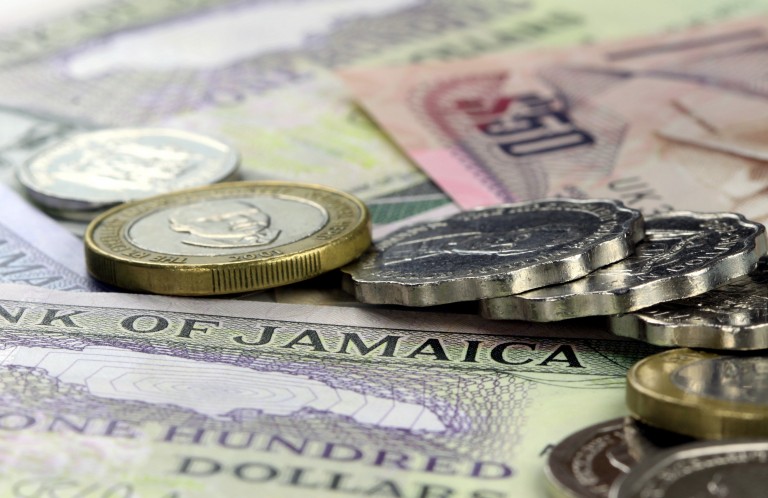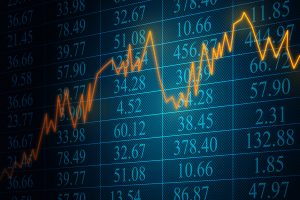November 24, 2022
- For the July – September 2022 quarter, real GDP is estimated to have grown by 4.3%, relative to the corresponding quarter of 2021. This out-turn represented the impact of the removal of COVID-19 containment measures globally, which facilitated increased domestic and external demand, resulting in a continuation of the economic recovery process, higher levels of employment, as firms increased operations to meet the growth in demand.
- The estimated out-turn was also influenced by increased business and consumer confidence, associated with the prospects for strengthened economic out-turn in the short to medium term, and higher levels of productivity in the agriculture industry, evidenced by an increase in output per hectare.
- The Goods Producing Industry is estimated to have increased by 3.2%, due to improvements in the Agriculture and Manufacturing industries. These improvements outweighed contractions recorded for Mining & Quarrying and Construction industries.
- The Services Industry was estimated to have grown by 4.7%, relative to the corresponding quarter of the previous year, reflecting higher Real Value Added for all industries.
Production Performance by industry:
Real Value Added for the Hotels & Restaurants industry was estimated to have grown by 29.6%. Preliminary data revealed that Stop-Over arrivals increased by 42% to 478,757 visitors, and Cruise passenger arrivals for July-August 2022 was 156,609 relative to 3,496 in the corresponding quarter of 2021. Based on data received for July to August 2022, total visitor expenditure increased to US$692.8 million and increase of 49.5% to the corresponding period.
Real Value Added for the Mining & Quarrying industry decreased by 30.4%, due to declines in both alumina and crude bauxite production. Alumina production fell by 38.8%, Crude Bauxite production declined by 10.3%, resulting from lower demand. The Average bauxite capacity utilization rate fell by 4.9 percentage points to 42.8%.
Real Value Added for the Agriculture, Forestry & Fishing industry, was estimated to have grown by 15.4%. The performance of the industry reflected the impact of increased demand particularly from Hotels and Restaurants associated with the removal of measures previously implemented to stem the spread of COVID-19 as well as increases in output per hectare and total hectares reaped for Domestic Crops. The Other Agricultural Crops group was estimated to have grown by 16.1% reflecting higher production in all nine crop groups, as a result of a rise in hectare reaped in all crop groups.
Real Value Added for the Manufacturing industry increased by an estimated 3.5%, due to higher output in both the Other Manufacturing and the Food, Beverages & Tobacco components. In the Other Manufacturing category, higher output stemmed largely from increases in the Chemicals & Chemical Products and Non-Metallic Mineral categories. Reductions were recorded for Liquid Petroleum Gas, down 100%; Gasoline, down 22.5%. The Non-metallic Minerals category also increased due to Cement production, up 30.4% and Clinker, up 18.9%.
Real Value Added for the Construction industry decreased by 2.2%, reflecting decline in in the sales of construction-related goods. The contraction in the Other Construction component was due to a decline in capital expenditure on civil engineering activities largely reflecting the National Works Agency, down 35.2% to $5.9 billion and JPS, down 1.4% to $1.8 billion. The Building Construction component was estimated to have grown, supported by an increase in the value (up 23.9% to $16.3 billion) and the volume (up 4.0%) of mortgages disbursed. The number of housing starts by the NHT was estimated to have increased by 103%.
The Electricity & Water Supply industry was estimated to have recorded growth in Real Value Added of 3.8%, reflecting increases in both electricity and water consumption. Electricity consumption increased by 5.1% reflecting higher consumption in: General Service (up 11.3%), Power Service (up 6.8%), Large Power (up 7%), and Largest Power (up 23.9%). Water consumption decreased by 0.8%, reflecting the combined effect of consumption in the Western division, up 1.2% that outweighed lower consumption in the Eastern division of 1.7%.
Real Value Added for the Transport, Storage & Communication industry grew by 3.6%, mainly due to an estimated increase in the Transport & Storage component, combined with an estimated increase in the Communication component. The growth in the Transport & Storage component reflected the combined effect of: Increased passenger movements up 56.2%, due to Arrivals (up 55.2%), and Departures (up 50.8%) and Aircraft movement (up 43.1%).
Real Value Added for the Finance & Insurance Services industry was estimated to have grown by 1.0%. This performance was influenced by increased profitability at deposit taking institutions, associated with an increase in net fees and commissions income.
Real Value Added for the Wholesale & Retail Trade; Repair & Installation of Machinery (WRTRIM) industry was estimated to have grown by 7.5% due to higher demand stemming from an increase in the employed labour force by 53,000 persons; Growth in related Manufacturing, and Agriculture, Forestry & Fishing industries; and Removal of COVID-19 containment measures.
Outlook
The PIOJ noted that “For October–December 2022, it is projected that the economy will grow within a range of 2.5% to 3.5%. Generally, the prospects for the Jamaican economy in the short to medium term are positive, given the impact of the removal of the previously implemented COVID-19 containment measures. This will continue to support the expansion of economic activities in most industries. Increased employment levels will also result in greater domestic demand in the short to medium term. The resumption of production at the JAMALCO Alumina refinery and the gradual ramping-up of capacity utilization are expected to result in relatively strong growth in the Mining & Quarrying industry in the short term. In addition, the Hotels & Restaurants industry is expected to continue to record robust growth.”
Furthermore, for Fiscal Year 2022/23, the projection is for growth within the range of 3.5% to 4.5%. This forecast takes into consideration supply-chain disruptions due to the impact of geo-political conflict, as well as the re-imposition of COVID-19 management measures particularly in China and tightened monetary policy as Central Banks address the high inflationary environment, which could result in a stronger than expected slowdown in domestic demand.
Disclaimer:
Analyst Certification -The views expressed in this research report accurately reflect the personal views of Mayberry Investments Limited Research Department about those issuer(s) or securities as at the date of this report. Each research analyst (s) also certify that no part of their compensation was, is, or will be, directly or indirectly, related to the specific recommendation(s) or view(s) expressed by that research analyst in this research report.
Company Disclosure -The information contained herein has been obtained from sources believed to be reliable, however its accuracy and completeness cannot be guaranteed. You are hereby notified that any disclosure, copying, distribution or taking any action in reliance on the contents of this information is strictly prohibited and may be unlawful. Mayberry may effect transactions or have positions in securities mentioned herein. In addition, employees of Mayberry may have positions and effect transactions in the securities mentioned herein.




